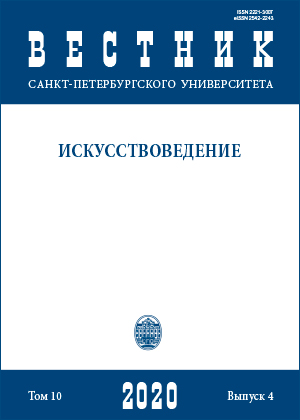Studies of Ornament: Main Trends and Prospects
DOI:
https://doi.org/10.21638/spbu15.2020.403Аннотация
The analysis of the ornament is the key issue in the studies of the applied decorative art. Nevertheless, the principal points pertaining to the nature of ornament, its expressivity, semantics, compositional principles and cultural value, have only been covered intermittently. This is primarily due to the disengagement of the various academic fields involved in the studies of ornament: art history, cultural anthropology, ethnography, archeology, etc. It seems important to synthesize the methods and approaches as well as set up the basis for developing the general principles for the studies of ornament, that would take into account all its various aspects. The definition of ornament through its decorative function does not encompass its essential features: rhythm, meter, and symmetry. Ornament can be considered as a strategy of visualizing rhythm and can be regarded as a specific art form. Apart from the formal trend, based on systematization of ornaments, the approaches to ornament as the basis of ethnocultural reconstructions play a prominent part. Studies concerning the semantics of ornament offer a whole range of opinions, but the widespread notion that ornament is a set of signs and symbols calls for a critical reappraisal. At the same time, ornament plays an important part in the process of intercultural and intracultural communications on the level of signal and index, being a special kind of “art-rhythm”. The interdisciplinary approach opens a much broader range of ideas concerning the options for studying ornaments and offers solutions for subsequent research. One of the most promising possibilities is the comprehensive and cross-cultural analysis of ornament as the element of a communication system, based on the search for the links between the development of the ornamental traditions and styles as well as the developments in the other spheres of human culture.
Ключевые слова:
ornament, theory of ornament, history of ornament, definition of ornament, ornament in archeology, ornament in ethnography, symmetry in ornament
Скачивания
Библиографические ссылки
Загрузки
Опубликован
Как цитировать
Выпуск
Раздел
Лицензия
Статьи журнала «Вестник Санкт-Петербургского университета. Искусствоведение» находятся в открытом доступе и распространяются в соответствии с условиями Лицензионного Договора с Санкт-Петербургским государственным университетом, который бесплатно предоставляет авторам неограниченное распространение и самостоятельное архивирование.






